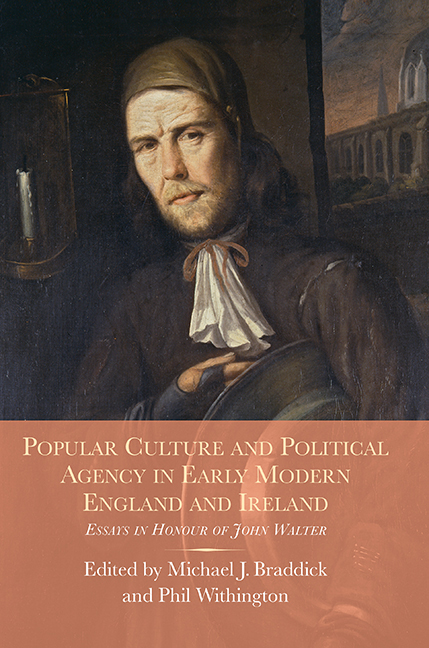 Popular Culture and Political Agency in Early Modern England and Ireland
Popular Culture and Political Agency in Early Modern England and Ireland Published online by Cambridge University Press: 09 May 2017
The significance of religion in the deepening crisis in church and state during the 1630s and 1640s has been widely discussed by historians. Yet consideration of the role of women has not always been adduced in these discussions. We still need to know what meaning Laudian innovation held for women and whether those meanings were different from men. What difference did Laudianism make to the practice of their religion? How often were women involved in campaigns against Laudian policy? Which women? In which types of conflict did they participate and why? What can we find out about women who tolerated or supported Laudianism? These questions have become important and plausible in the light of recent scholarship on gender and the state that has established women as significant agents of political power and authority in early modern England, especially at parish level. A gender analysis of the confessional politics of Laudian England contributes to a deeper understanding of the contexts in which female agency was constructed, activated and used. It also offers insights into the way that disputes about the use and meaning of sacred space politicised women as well as men in the decades leading to conflict and helps relate women's well documented religio-political agency in the Civil War years to their earlier cultural roots. This essay attempts to add to our knowledge through a case study of women's religious activism in the county of Essex in the 1630s. It draws on micro-historical methods to place evidence within an appropriate regional context to allow for a clearer sense of resistance and/or acceptance of official policy and the different responses of the different sexes. Several features of the region lend themselves to study. Laudian conformity was rigorously enforced in Essex in the 1630s despite its reputation as a Puritan stronghold and a significant proportion of the laity in Essex were exposed to the architectural changes and ritual practices associated with the Laudian campaign for the ‘beauty of holiness’ during the reign of Charles 1.
The surviving source material is also rich and extensive. The study is based primarily on archdeaconry records which are extant for the whole county for the period, together with testimonies given to the Committee for Scandalous Ministers, set up in 1644. These sources are by no means straightforward to interpret and historians have long recognised the complex mediations by which they were composed.
To save this book to your Kindle, first ensure [email protected] is added to your Approved Personal Document E-mail List under your Personal Document Settings on the Manage Your Content and Devices page of your Amazon account. Then enter the ‘name’ part of your Kindle email address below. Find out more about saving to your Kindle.
Note you can select to save to either the @free.kindle.com or @kindle.com variations. ‘@free.kindle.com’ emails are free but can only be saved to your device when it is connected to wi-fi. ‘@kindle.com’ emails can be delivered even when you are not connected to wi-fi, but note that service fees apply.
Find out more about the Kindle Personal Document Service.
To save content items to your account, please confirm that you agree to abide by our usage policies. If this is the first time you use this feature, you will be asked to authorise Cambridge Core to connect with your account. Find out more about saving content to Dropbox.
To save content items to your account, please confirm that you agree to abide by our usage policies. If this is the first time you use this feature, you will be asked to authorise Cambridge Core to connect with your account. Find out more about saving content to Google Drive.